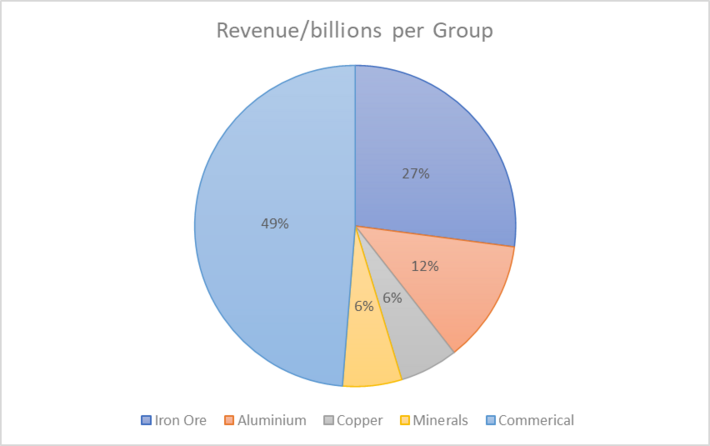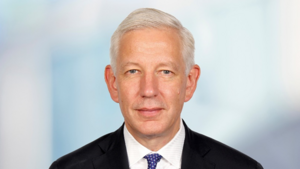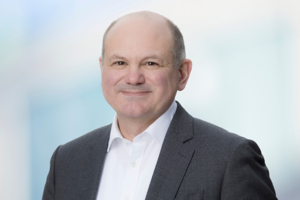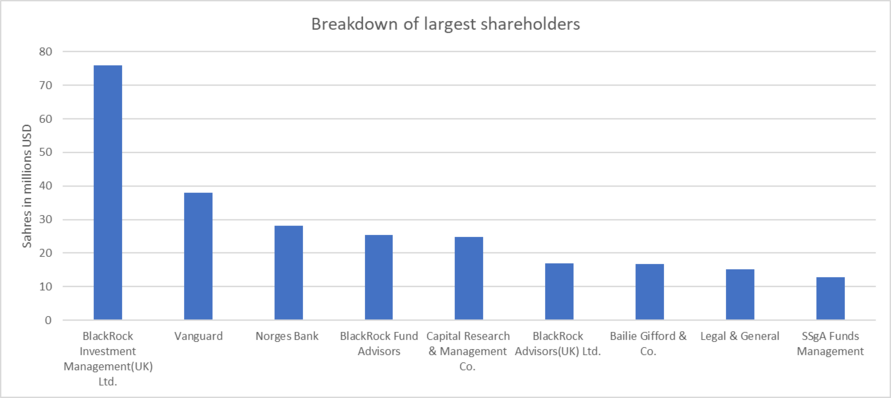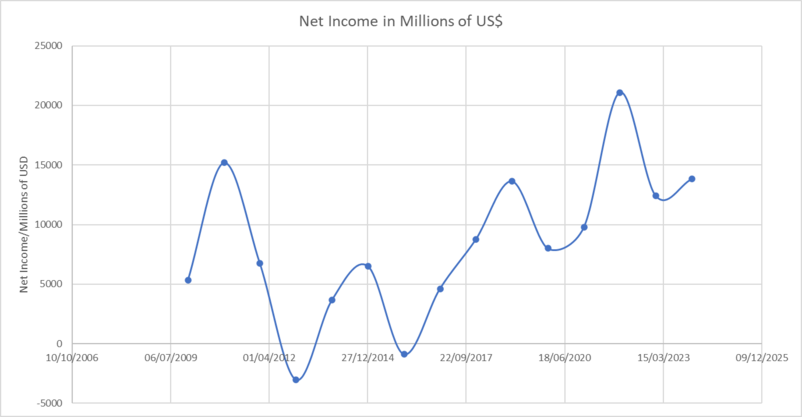The IdeaEdit
Rio Tinto is the second-largest metals and mining company in the world. It is an Anglo-Australian conglomerate founded in 1873 when the company purchased the rights to mine at the Rio Tinto mines in southern Spain. These first mines were also the namesake of the company and were a rich source of copper, silver, and other metals.
The company is dual-listed in the UK and Australia and has significant mining/refining operations across several countries. With the increasing need for metals and environmental movements, Rio Tinto is currently researching better methods of metal extraction, recycling, and decarbonising the mining process.
Mission StatementEdit
Rio Tinto being a large publicly traded mining company has a mission statement balancing shareholder duties with commitment to sustainable mining operations.
The aim of Rio Tinto is given as “Our ambition is to deliver superior returns for our shareholders by becoming a leader in the global energy transition and finding better ways to provide the materials the world needs.[1].
The statement demonstrates Rio Tinto’s commitment to providing materials in an environmentally conscious manner whilst balancing its fiduciary duty to shareholders.
SegmentsEdit
Rio Tinto splits its business to focus on specific metals so each unit of the business can implement the best strategy for that product area. Below is a brief description of each business unit,
Iron OreEdit
As one of the leading producers of iron ore, this division is one of the integral parts of Rio Tinto. The division is responsible for 17 mines, 4 port terminals, and a rail network of over 2,000 km. The division employs 15,000 people and brought in a revenue of $30.9 billion.
AluminiumEdit
As one of the most recyclable metals, Rio Tinto aims to boost the production of low-carbon aluminium. It is a key material in products ranging from beverages to electric vehicles. The division also employs 15,000 people with a revenue of $14.1 billion.
CopperEdit
One of the most crucial elements in the fight against climate change. Copper is critical for the rapid electrification that governments across the world are currently investing in. The group is currently focussing on expanding copper mines in existing mining areas and mining copper underground. Copper employs 8,000 people and brought in a revenue of $6.7 billion.
MineralsEdit
This division involves a mix of ceramics and mineral compounds such as titanium dioxide, diamond, and borates. These materials are typically used for electronics and is a growing market. The division is pioneering ways to extract commodities from detritus such as extracting scandium oxide from titanium dioxide production. The group also aims to diversify its portfolio of commodities by acquiring new mines for the mining of other minerals such as lithium oxide. The division employs 8,000 people.
CommercialEdit
The commercial group is responsible for the global sales, marketing, and logistics that mining entails. They liaise with markets, customers, and suppliers across the world to deliver metals/minerals. The group has built a network of 20,000 suppliers and over 2,000 customers. They work closely with this network to generate new insights and opportunities.
| Group | Revenue/billions $ | Percentage |
| Iron Ore | 30.9 | 27.08% |
| Aluminium | 14.1 | 12.36% |
| Copper | 6.7 | 5.87% |
| Minerals | 6.8 | 5.96% |
| Commerical | 55.6 | 48.73% |
ProjectsEdit
Recently the mining landscape is rapidly evolving reflecting the rapidly changing consumer market, government investments, and company priorities. Given the need for greener technologies and electric generation has resulted in a higher demand for rare earth metals meaning that Rio Tinto has had to change its projects and strategies.
Some current projects are briefly described below.
Kennecott Underground Project, Utah, US
Over 100 million dollars is being invested into underground mining projects. The technology will enable safer, less toxic mining operations in Kennecott of various rare earth compounds. The mine would allow for potential mining expansion in developed countries allowing mining in less geopolitically sensitive areas.
Oyo Tolgoi Underground, Khanbogd, Mongolia
The Oyu Tolgoi copper mine is an open pit mine and underground mining project. Rio Tinto is using block-caving mining techniques to extract the ore and transport it to the surface.
The mine is expected to operate in the first quartile of copper cash cost curve which is where the mine generates more than operating costs.
This mine is expected to be the fourth largest copper mine in the world with over 500 kilotonnes of copper per year being produced between 2028 to 2036. It is one of the most safe and water efficient operations and represents the largest foreign investment in Mongolia.
Simandou, Nzerekore, Guniea
Siandou is home to the richest and largest iron ore deposits. This new mine would assist with diversifying the critical portfolio of iron ore products and provide much-needed resilience to the supply chain of iron ore.
LeadershipEdit
Chair – Dominic BartonEdit
As a chairperson, Dominic Barton is responsible for presiding over board meeting and ensures that the board is functioning effectively,
Dominic has spent over 30 years at McKinsey & Co, and has also held many public sector leadership positions such as Canada’s ambassador to china.
His public sector experience along with business competencies has assisted Rio Tinto to navigate complex geopolitical landscapes.[2]
Chief Executive – Jakob StausholmEdit
Day-to-day management of the business is primarily handled by the executive committee and CEO.
Jakob joined Rio Tinto in September 2018 as CFO. He has had over 20 years of experience in senior finance roles at Maersk Group and Royal Dutch Shell. His expertise in logistics and the oil industry has assisted him with Rio Tinto and he is working to improve operational performance to progress value- accretive growth while delivering returns for the shareholders.[3]
CFO - Peter CunninghamEdit
Peter was appointed CFO in June 2021 and has 20 years of experience working in Rio Tinto. He has held various senior leadership roles such as Group Controller, Head of Investor Relations, and Head of Energy and Climate Strategy which is a testament to his stakeholder management abilities.
Peter is currently working on the decarbonisation of Rio Tinto assets by prudential investments in commodities essential for energy transition whilst delivering attractive returns to shareholders.
Ownership StructureEdit
As Rio Tinto is a dual-listed company, the owners of both Rio Tinto plc and Rio Tinto Limited are mentioned below as they are managed together. The top 10 shareholders are listed below. Approximately 21.54% of Rio Tinto shares are held by the top 10 institutional shareholders.
| Shareholder | Shares in millions |
| BlackRock Investment Management(UK) Ltd. | 76.02 |
| Vanguard | 37.92 |
| Norges Bank | 28.11 |
| BlackRock Fund Advisors | 25.38 |
| Capital Research & Management Co. | 24.85 |
| BlackRock Advisors(UK) Ltd. | 16.9 |
| Bailie Gifford & Co. | 16.73 |
| Legal & General | 15.21 |
| SSgA Funds Management | 12.7 |
Corporate StrategyEdit
Rio Tinto operates in over 35 countries requiring a coherent strategy to extract the metals and minerals whilst minimising impact on the environment and communities.
One aspect of the strategy is to organise departments to address each of the major products including iron ore and aluminium.
Given the trend for net zero, Rio Tinto is committed to assisting with the fight against climate change. Rio Tinto has set ambitious targets to reach net zero by 2050 and to reduce Scope 1 and 2 emissions by 50% by 2030.
To accomplish this, Rio Tinto will invest $7.5 billion in decarbonisation by 2030 to switch to renewable power, electrify aspects of mining, and purchase offsets. These offsets involve nature-based projects such as plating forests.
Rio Tinto is also developing products and technologies to make mining more environmentally friendly. Rio Tinto has established the role of the Chief Scientist and doubled the R&D budget to $400 million for projects such as carbon-free aluminium smelting.
Outside of the net zero targets and projects, Rio Tinto has three objectives.
Best OperatorEdit
Rio Tinto aims to make use of assets as well as possible by deploying a Safe Production System to improve operational performance and safety,
Excel in DevelopmentEdit
This objective describes Rio Tinto’s desire to deliver growth in commodity mining and future mineral markets whilst maintaining financial strength and resilience.
ESGEdit
Rio Tinto is putting ESG at the heart of decision making such as decarbonisation as mentioned before and improving accountability and transparency. Moreover, they wish to deepen social license by working with indigenous communities and minimise the impact of operations on communities.
Historic and Future FinancialsEdit
| Year End | Net Income in Millions of US$ | Assets in Millions of US$ |
| 31/12/2009 | 5335 | 97236 |
| 31/12/2010 | 15184 | 112402 |
| 31/12/2011 | 6765 | 119545 |
| 31/12/2012 | -3004 | 117573 |
| 31/12/2013 | 3665 | 111025 |
| 31/12/2014 | 6527 | 107827 |
| 31/12/2015 | -866 | 91564 |
| 31/12/2016 | 4617 | 89263 |
| 31/12/2017 | 8762 | 95726 |
| 31/12/2018 | 13638 | 90949 |
| 31/12/2019 | 8010 | 87802 |
| 31/12/2020 | 976 9 | 97390 |
| 31/12/2021 | 21094 | 102896 |
| 31/12/2022 | 12420 | 96744 |
Recent revenues has increased dramatically from 2020 to 2021 due to the greater demand for goods post pandemic amongst several developed countries. This in turn necessitated more metals/minerals for the production of various consumer goods such as cars, white goods and electronics. However 2021 to 2022 revenue decreased mainly due to the lockdown restrictions imposed in China. Since China is a major manufacturing powerhouse, a reduction in demand from the Chinese market ensured that there was a major price drop in the commodities market which impacted the revenue of Rio Tinto in financial year 2022. However, as China is coming out of pandemic restrictions, there should be an increasing demand for metals/minerals leading to a more positive outlook for Rio Tinto in 2023.
To estimate future revenue, the FORECAST.ETS function was used in excel which uses an exponential smoothing algorithm based on the previous data provided to forecast future returns.
| Year End | Future Net Income in Millions of US$ |
| 31/12/2023 | 13821.95 |
| 31/12/2024 | 14519.41 |
| 31/12/2025 | 15216.86 |
| 31/12/2026 | 15914.32 |
| 31/12/2027 | 16611.78 |
| 31/12/2028 | 17309.24 |
| 31/12/2029 | 18006.69 |
| 31/12/2030 | 18704.15 |
| 31/12/2031 | 19401.61 |
| 31/12/2032 | 20099.06 |
| 31/12/2033 | 20796.52 |
| 31/12/2034 | 21493.98 |
| 31/12/2035 | 22191.44 |
| 31/12/2036 | 22888.89 |
As you can see the mining industry is very cyclical since the price of metals are very volatile. In certain years there is a surplus of metals such as steel or copper particularly when major manufacturing and consumer countries experience economic slowdown which reduces the demand for metals. However, in the future as more countries industrialise rapidly and a greater emphasis is placed on green transition metals should increase in price in a less cyclical fashion.
MarketEdit
The mining market is undergoing a dramatic change due to the growing need for newer materials such as rare earth materials in the past were less profitable segments. Moreover, governments are playing a much larger role in the industry as they are looking to own a larger share of mines and supply chain assets. This means that miners need to contend with greater risk and possible lower returns due to governmental involvement.
As mentioned repeatedly throughout Rio Tinto's mission statement, the mining industry is looking to electrify its assets and move operations to net zero across the industry.
In terms of financials, the market has grown at a CAGR of 6.1%[5] from $2.023 trillion to $2.145 trillion. Recently commodity prices have increased due to greater demand for metals, disrupted supply chain causing inflation and industrialisation of developing countries.
ReferencesEdit
[1] https://www.riotinto.com/about#:~:text=Our%20ambition%20is%20to%20deliver,the%20materials%20the%20world%20needs.
[2] https://www.riotinto.com/en/about/board-of-directors/dominic-barton
[3] https://www.riotinto.com/en/about/executive-committee/jakob-stausholm
[4] https://www.riotinto.com/en/about/executive-committee/peter-cunningham
[5] https://www.researchandmarkets.com/reports/5781216/mining-global-market-report
